What Is Cache On Spotify And How To Clear Spotify Cache
Most desktop and mobile apps collect cache in the background to improve loading times and user experience. Spotify is no exception here. When you use the Spotify app most of the time, cache files may keep growing. The cache can improve app performance but this can also be a bigger problem in the future especially if you always encounter low disk space dilemmas.
What is cache on Spotify? How often should I clear my cache? What will happen if you clear Spotify cache? In this article, we are going to answer these questions. We will also share how to listen to Spotify songs you love even while making sure that you won’t have any problems with disk space that can also affect the performance of your device.
Contents Guide Part 1. What Is the Spotify Cache?Part 2. How to Clear Spotify Cache on Desktop and Mobile?Part 3. Bonus: Download Spotify Music to External Hard Drive for Offline PlayingTo Summarize It All
Part 1. What Is the Spotify Cache?
What is cache on Spotify? The cache is where Spotify stores certain data, such as playlists, album art, and recently played history, in order to make the app run faster and play without lagging. Spotify cache also includes the downloaded music and podcasts for playing offline.
It is true that cache can help you speed up the process and run software smoother than you have ever imagined it to be, but too many cache files can also cause the slowing down of your device which is also annoying. This is why there are proper measures that you have to take into mind to clear Spotify’s cache.
What will happen if I clear cache on Spotify? Once cleared Spotify cache, the music you streamed or downloaded when you used the app will be removed. It also removes your search history and deletes album thumbnails. In the next section of this article, we are going to talk about how to delete Spotify cache on desktop and mobile to save storage space!
Part 2. How to Clear Spotify Cache on Desktop and Mobile?
Now that we have an idea of what is cache on Spotify, the next important thing we must figure out is the proper way to delete the Spotify cache. We have listed some of the procedures below, so let us all look at them.
Clear Spotify Cache on Desktop
One of the major devices to access Spotify is your desktop computer, see the below procedures to delete cache on the Spotify desktop app.
- Run the Spotify desktop app first.
- Click your profile picture at the top, and select Settings.
- Scroll down and click Storage.
- To clear Spotify cache correctly, click Clear cache.
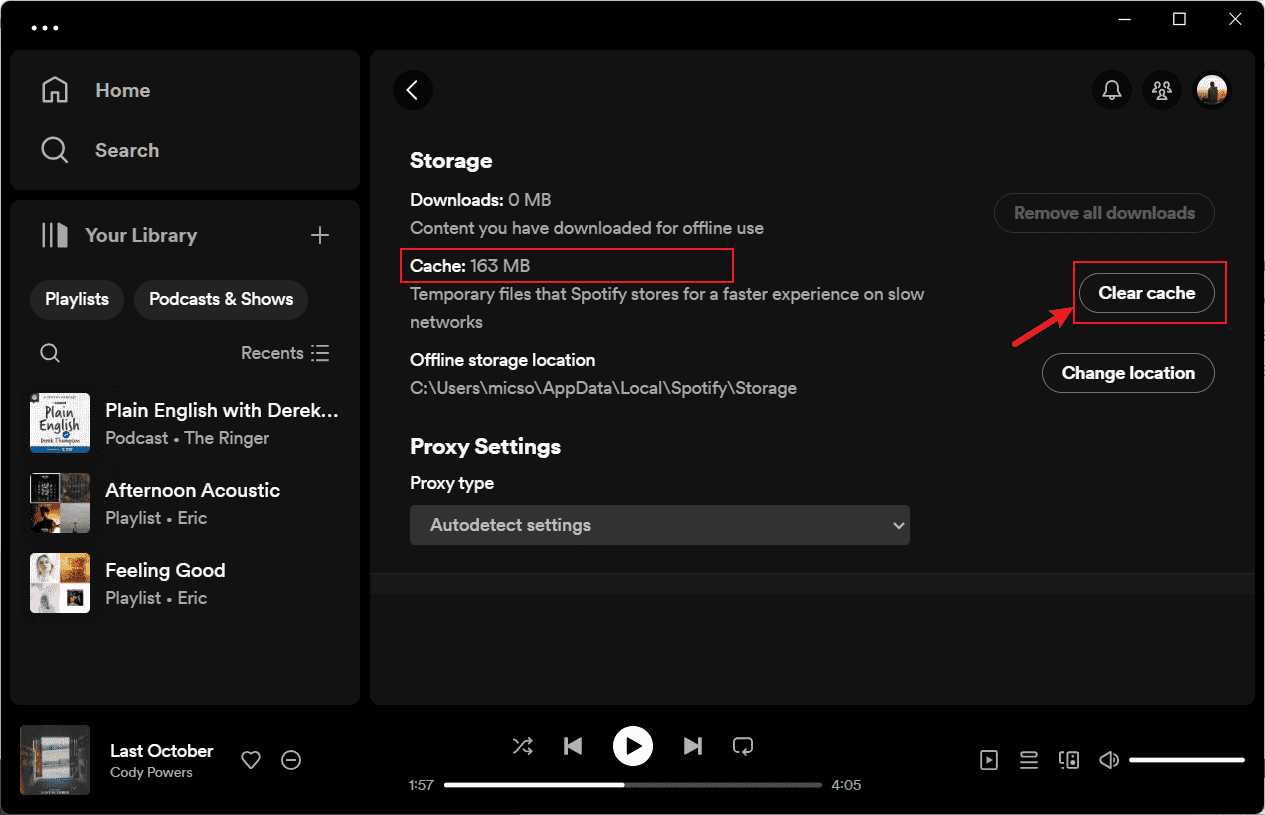
Tip: You can change your Spotify File Location to store your cache somewhere else.
Clear Spotify Cache on Mobile
Aside from using a desktop computer, you also use your iOS/Android device to delete cache. What is cache on Spotify mobile app? It stores a large of downloaded music and podcasts to play offline. As we all know, the mobile device's storage space is limited, if you don’t have enough storage space, you need to free up space by clearing the Spotify cache. You can use the reference of the steps that we have below.
- Launch the Spotify app on your mobile device.
- To delete Spotify cache, tap your profile picture.
- On Android, tap Settings and privacy. On iOS, click Settings.
- On Android, click Delete cache under Storage. On iOS, click Clear cache.
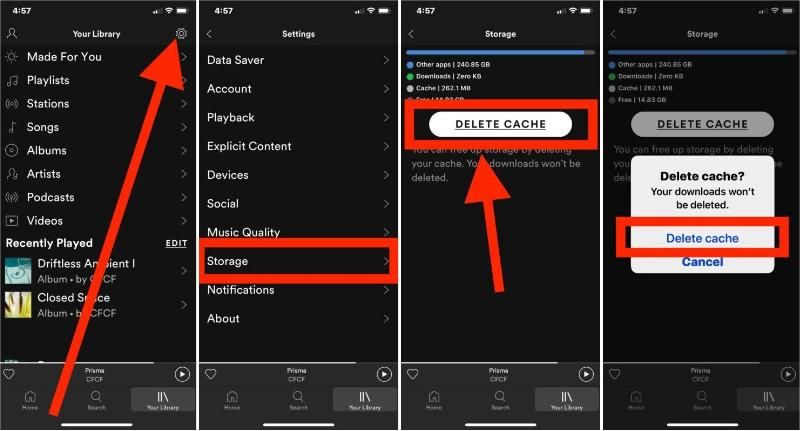
Clear Spotify App Cache on Android
If you are an Android user, do the following to clear your Spotify app cache:
- Go to Settings on your phone and tap on Apps or Applications, depending on the version of Android OS.
- Locate and tap on Spotify.
- Select the Storage & cache menu.
- To delete Spotify cache, check cache data and tap Clear cache.
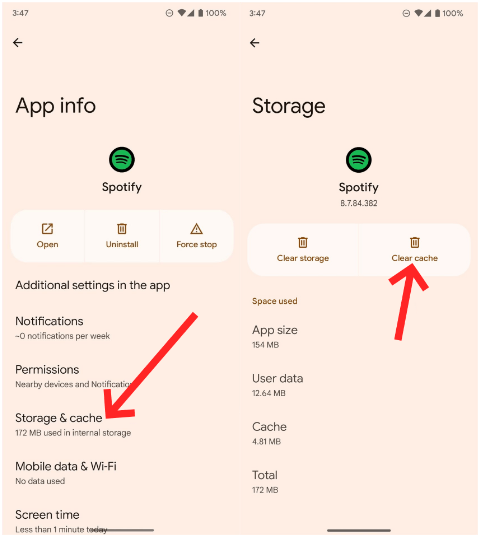
Clear Spotify App Cache on iOS
Now that we have an idea of what is cache on Spotify, we are well aware that it can occupy a huge space on our devices, like our iPhones. You can also check how much space the app takes on your iPhone. Go through the steps below.
- Open the Settings app on your iPhone.
- Then once you are on the Settings page, click General.
- Select iPhone Storage from the following menu.
- Scroll to Spotify to check detailed storage information.
- Check the Spotify App Size and Documents and data.
- Here you can choose Offload App (free up storage used by the app but keep its documents and data), or Delete App (delete the app and all related data from your iPhone).
Tip: If Spotify stops playing on iPhone when screen is locked, you can also try removing the Spotify cache to fix it.
Part 3. Bonus: Download Spotify Music to External Hard Drive for Offline Playing
Now that we have a lot of knowledge about what is cache on Spotify and how to clear Spotify cache, let us now move on with the method that can help us play Spotify tracks and free up space on the device. As a Spotify user, you probably have tens or hundreds of playlists on your library, and prefer to download them for playback offline. All these downloads will eat up your storage gradually. Sometimes, Spotify local files might not show if the device's storage is full.
In this case, it is not enough to delete the Spotify cache. You need to free up space by moving Spotify offline songs to external hard drive or computer. To transfer Spotify playlists to any device you want without losing any data, AMusicSoft Spotify Music Converter is arguably the best choice. AMusicSoft software provides a free method to enjoy music while also making sure that a huge space will not be occupied by the music files that we download.
Features of AMusicSoft Spotify Music Converter
- Delete DRM Encryption from Spotify: By bypassing DRM, you can easily access Spotify music on any device or player without thinking of any format or device incompatibility.
- Convert Spotify Music to Flexible File Formats: Support MP3, MP4, WAV, FLAC, AIFF, AAC, etc.
- 5X Faster Speed, Lossless Download: Convert your music files at a 5X conversion rate.
- Keep ID3 Tags: The ID3 tags will be preserved in output audio files after conversion, including the title, artist, album, artwork, track number, disc number, and year.
- Save Money: Both Spotify users can download music as local files. No Premium plan is required.
- Built-In with Spotify Web Player: AMusicSoft provides the built-in free Spotify web player for downloading Spotify songs or uploading local common tracks.
- User-Friendly Interface: The interface of the AMusicSoft software is also easy to understand and will be good even if you are still a beginner.
AMusicSoft Spotify Music Converter now offers a free trial to all newbies! Try it free!
Download Spotify Music to External Hard Drive to Offline Playback
Step 1. Prepare all the necessary data and details in order to install the AMusicSoft Spotify Music Converter on your personal computer. Open the tool once you have installed it and then tap the Add Files button to finally start importing the files.
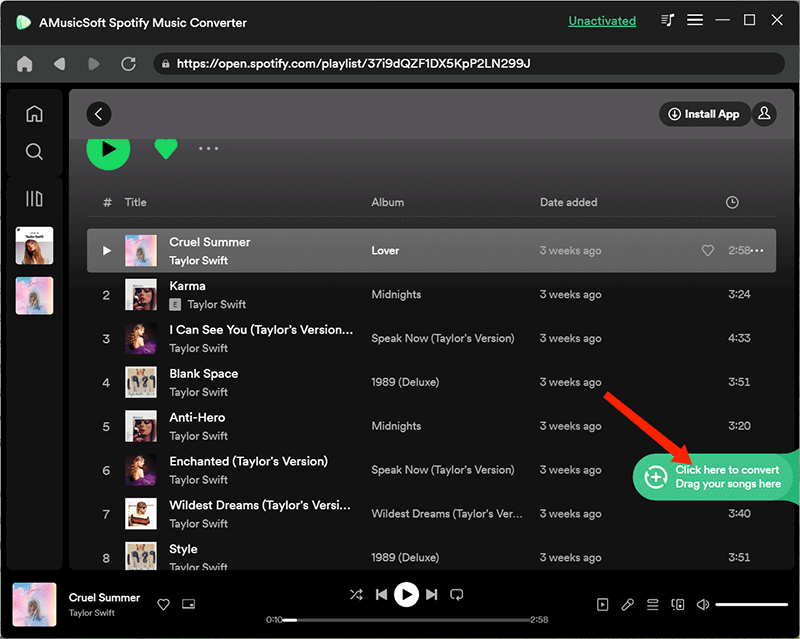
Step 2. Select the format of the files that you wanted to have and then create a folder where you will be saving the music files after they have been converted.
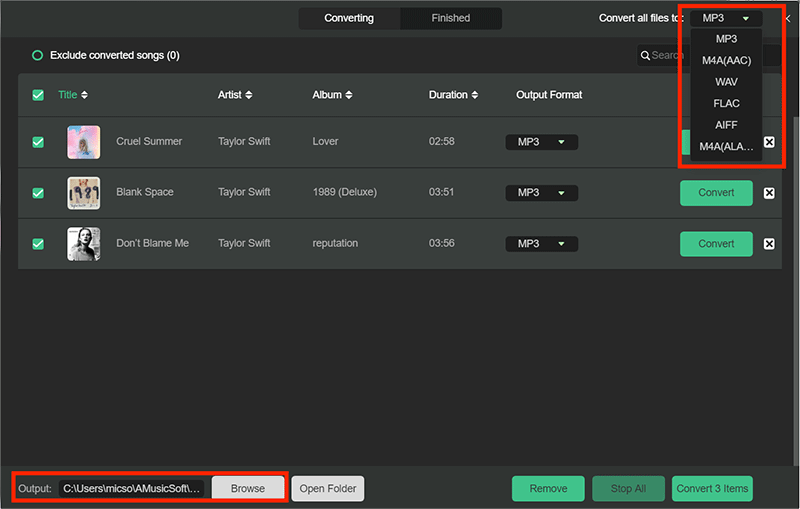
Step 3. Hit the Convert tab, and you just have to wait for some minutes until the professional tool has finally converted the files.
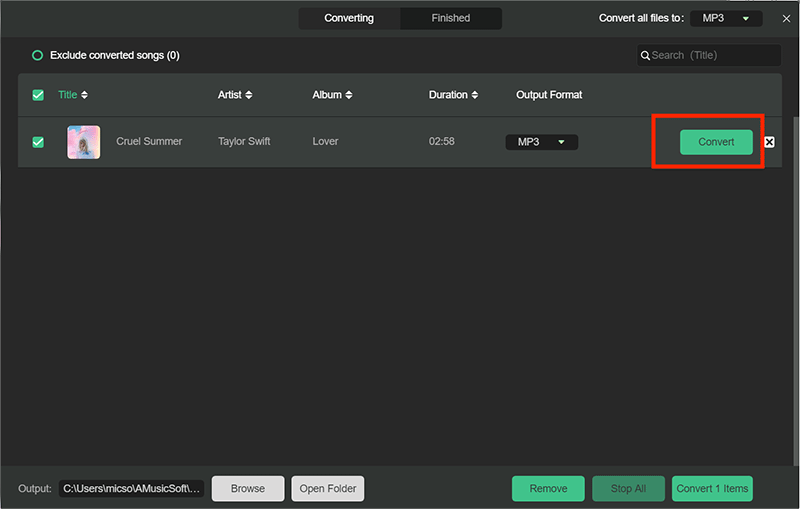
To Summarize It All
It is better that you have a clear understanding of what is cache on Spotify. By this, it can be assured that you have an idea of what you have to do in case you need to delete it or deal with it in some way. It is also a good assurance that you have ideas on the best tools that you can use to easily deal with all your music dilemmas such as AMusicSoft Spotify Music Converter.
People Also Read
- How To Loop A Playlist On Spotify?
- The Alternatives To Spotify Running You Can Try
- Where To Get Free Download Hindi Songs? [Top 7 Websites]
- How To Get Rid Of Spotify Keeps Skipping Songs Issue
- How To Extract Spotify Songs To MP3 [Most Recommended Tools]
- Can You Keep Downloaded Music from Spotify After Canceling?
- How To Block Spotify Ads On Windows/Mac/Android/iOS
- How Can You Finish Spotify Change Plan Or Payment Method
Robert Fabry is an ardent blogger, and an enthusiast who is keen about technology, and maybe he can contaminate you by sharing some tips. He also has a passion for music and has written for AMusicSoft on these subjects.